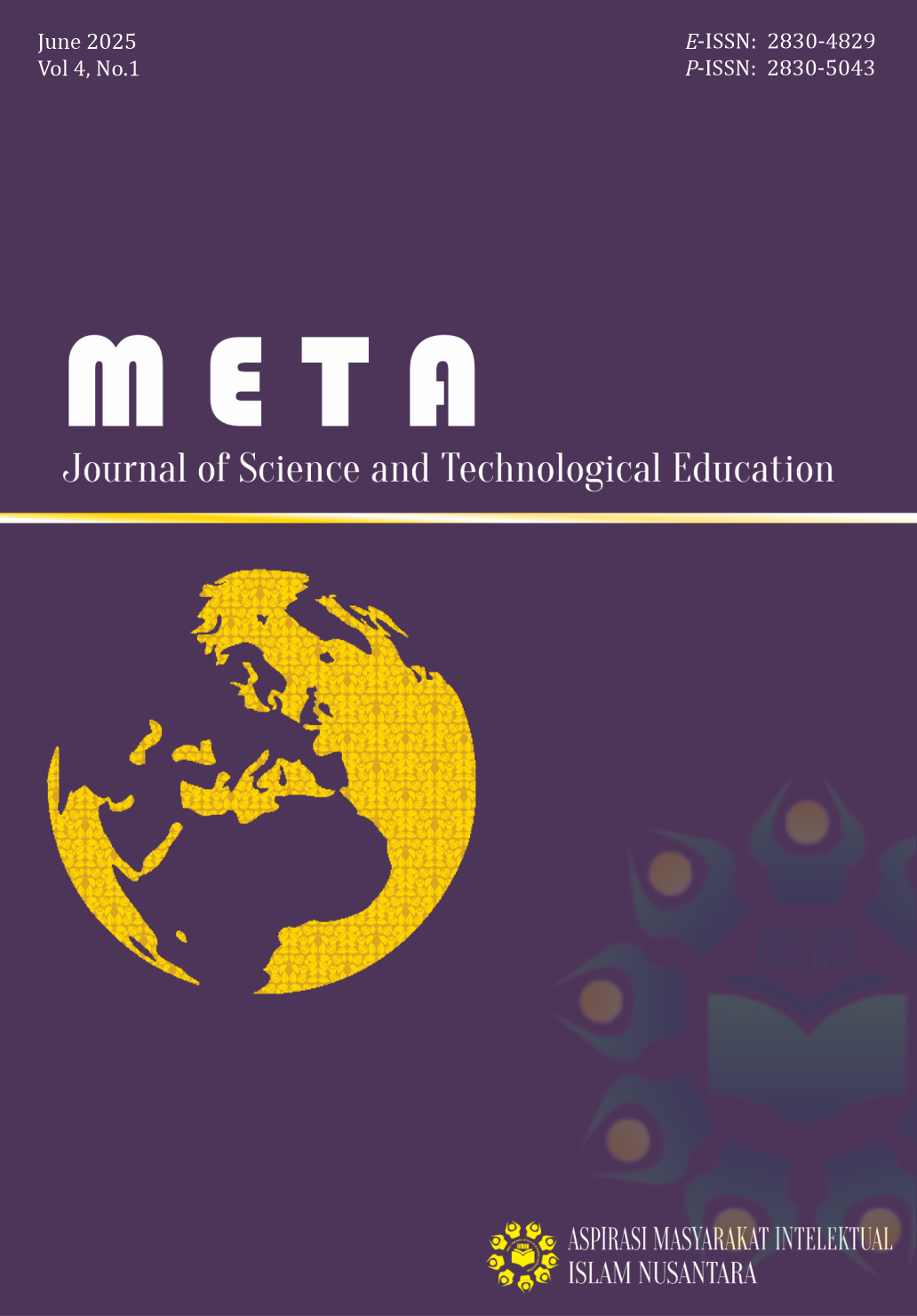The Correlation Between Students’ Comprehension of the Human Movement System and Their Attitudes Toward Maintaining Bone and Joint Health
Keywords:
Correlation, Students’ Comprehension, Human Movement System, Attitudes, Maintaining Bone and Joint HealthAbstract
This study examines the correlation between students’ comprehension of the human movement system and their attitudes toward maintaining bone and joint health among XI MIPA students at MA Wahid Hasyim Balung Jember. Using a quantitative correlational research design, data were collected through multiple-choice tests measuring students’ comprehension and Likert-scale questionnaires assessing their attitudes. A total of 66 students participated in the study, with data analyzed using Spearman’s rank correlation test. The findings indicated that students had a high level of comprehension, with 77% achieving a very high category and 11% classified as high. However, their attitudes toward bone and joint health were predominantly moderate, with 74% in the medium category and only 24% in the high category. Statistical analysis revealed no significant correlation between comprehension and attitude, as evidenced by a correlation coefficient of -0.056 and a p-value of 0.653 (p > 0.05). These results suggest that despite possessing strong cognitive understanding, students do not necessarily translate their knowledge into proactive health behaviors. The findings highlight the need for educational strategies that bridge the gap between theoretical knowledge and practical application, encouraging students to adopt healthier behaviors.
References
Al-Jayyousi, G. F., Sherbash, M. A. M., Ali, L. A. M., El-Heneidy, A., Alhussaini, N. W. Z., Elhassan, M. E. A., & Nazzal, M. A. (2021). Factors influencing public attitudes towards COVID-19 vaccination: a scoping review informed by the socio-ecological model. Vaccines, 9(6), 548. https://doi.org/10.3390/vaccines9060548
Alatas, A. (2005). Hubungan antara pemahaman siswa tentang materi pelajaran indera penglihatan terhadap perilaku menjaga kesehatan (Undergraduate thesis). UIN Jakarta. https://repository.uinjkt.ac.id/dspace/handle/123456789/26624
Amanda, N. D., Nurhidayah, T. M., & Ramadhani, T. Y. (2023). Menjaga Kesehatan Tubuh dalam Perspektif Islam. Religion: Jurnal Agama, Sosial, Dan Budaya, 2(5), 373-380. https://doi.org/10.55606/religion.v1i5.372
Azwar, S. (2022). Sikap Manusia Teori dan Pengukurannya. Yogyakarta: Pustaka Pelajar.
Amelia, P. (2023, July 23). Penyebab kelainan tulang pada anak. Orami Magazine. Retrieved from https://www.orami.co.id/magazine/kelainan-tulang-pada-anak
Fadlilah, S., & Rahil, N. H. (2019). Faktor-Faktor Yang Berhubungan Dengan Perilaku Pencegahan Cidera Muskuloskeletal Pada Pemain Futsal. Jurnal keperawatan BSI, 7(1). https://doi.org/10.31311/jk.v7i1.5271
Ferdiansyah, Z. D., Kuswandi, D., & Soepriyanto, Y. (2022). Pengembangan objek 3D memanfaatkan piramida hologram berbasis smartphone materi sistem gerak manusia. Jurnal Kajian Teknologi Pendidikan, 5(1), 72-80. http://dx.doi.org/10.17977/um038v5i12022p072
Green, E. C., Murphy, E. M., & Gryboski, K. (2020). The health belief model. The Wiley encyclopedia of health psychology, 211-214. https://doi.org/10.1002/9781119057840.ch68
Icek, M. F. (2021). Belief, attitude, intention, and behavior: an introduction to theory and research.
Jahantab, Z. (2021). Role of education in national development. Pakistan Journal of Applied Social Sciences, 12(1), 87-108. https://doi.org/10.46568/pjass.v12i1.543
Jasri, J., Biahimo, M. R., Haryani, M., Irawan, S., Alamri, S., Firmansyah, M., ... & Deluma, D. (2025). Edukasi Perilaku Hidup Sehat Untuk Mencegah Penyalahgunaan Narkoba Di SMAN 1 Kabila. Jurnal Riset dan Pengabdian Interdisipliner, 2(1), 39-43. https://doi.org/10.37905/jrpi.v2i1.29337
Lestari, E. A., & Nuryanti, N. (2022). Pentingnya Kualitas Sumber Daya Manusia Dalam Meningkatkan Mutu Pendidikan Anak. Jurnal Pendidikan Dan Konseling (JPDK), 4(5), 3689-3694. https://doi.org/10.31004/jpdk.v4i5.7204
Levin-Zamir, D., & Bertschi, I. (2018). Media health literacy, eHealth literacy, and the role of the social environment in context. International journal of environmental research and public health, 15(8), 1643. https://doi.org/10.3390/ijerph15081643
Nasution, N.E.A., Al Muhdhar, M.H.I., Sari, M.S., & Balqis. (2023). Relationship between Critical and Creative Thinking Skills and Learning Achievement in Biology with Reference to Educational Level and Gender. Journal of Turkish Science Education, 20(1), 66-83. https://doi.org/10.36681/tused.2023.005
Saputri, J., & Sutikno, S. (2021). Penyuluhan Posisi Duduk Yang Benar Untuk Kesehatan Punggung Pada Siswa/I Smpn 15 Banjarmasin. Jurnal Suaka Insan Mengabdi (Jsim), 3(2), 142-146.
Peraturan Pemerintah No. 4 Tahun 2022, Pasal 1A.
Peraturan Pemerintah No. 57 Tahun 2021, Pasal 1.
Sudijono, A. (2016). Pengantar Statistik Pendidikan. Jakarta: PT. Raja Grafindo Persada Ruseffendi.
Sugiyono, D. (2013). Metode penelitian pendidikan pendekatan kuantitatif, kualitatif dan R&D.
Triyono, S. D. K., & Herdiyanto, Y. K. (2017). Konsep sehat dan sakit pada individu dengan Urolithiasis (Kencing Batu) di Kabupaten Klungkung, Bali. Jurnal Psikologi Udayana, 4(2), 263-276. http://dx.doi.org/10.24843/JPU.2017.v04.i02.p04
Ullah, A., & Anwar, S. (2020). The effective use of information technology and interactive activities to improve learner engagement. Education Sciences, 10(12), 349. https://doi.org/10.3390/educsci10120349
Villardón-Gallego, L., García-Carrión, R., Yáñez-Marquina, L., & Estévez, A. (2018). Impact of the interactive learning environments in children’s prosocial behavior. Sustainability, 10(7), 2138. https://doi.org/10.3390/su10072138
Yaniaja, A. K., Wahyudrajat, H., & Devana, V. T. (2020). Pengenalan model gamifikasi ke dalam e-learning pada perguruan tinggi. ADI Pengabdian kepada Masyarakat Jurnal, 1(1), 22-30. https://doi.org/10.34306/adimas.v1i1.235
Zafi, A. A. (2018). Transformasi budaya melalui lembaga pendidikan (pembudayaan dalam pembentukan karakter). Al Ghazali, 1(1), 1-16. http://dx.doi.org/10.30738/sosio.v3i2.937
Downloads
Published
How to Cite
Issue
Section
License
Copyright (c) 2025 META: Journal of Science and Technological Education

This work is licensed under a Creative Commons Attribution 4.0 International License.










